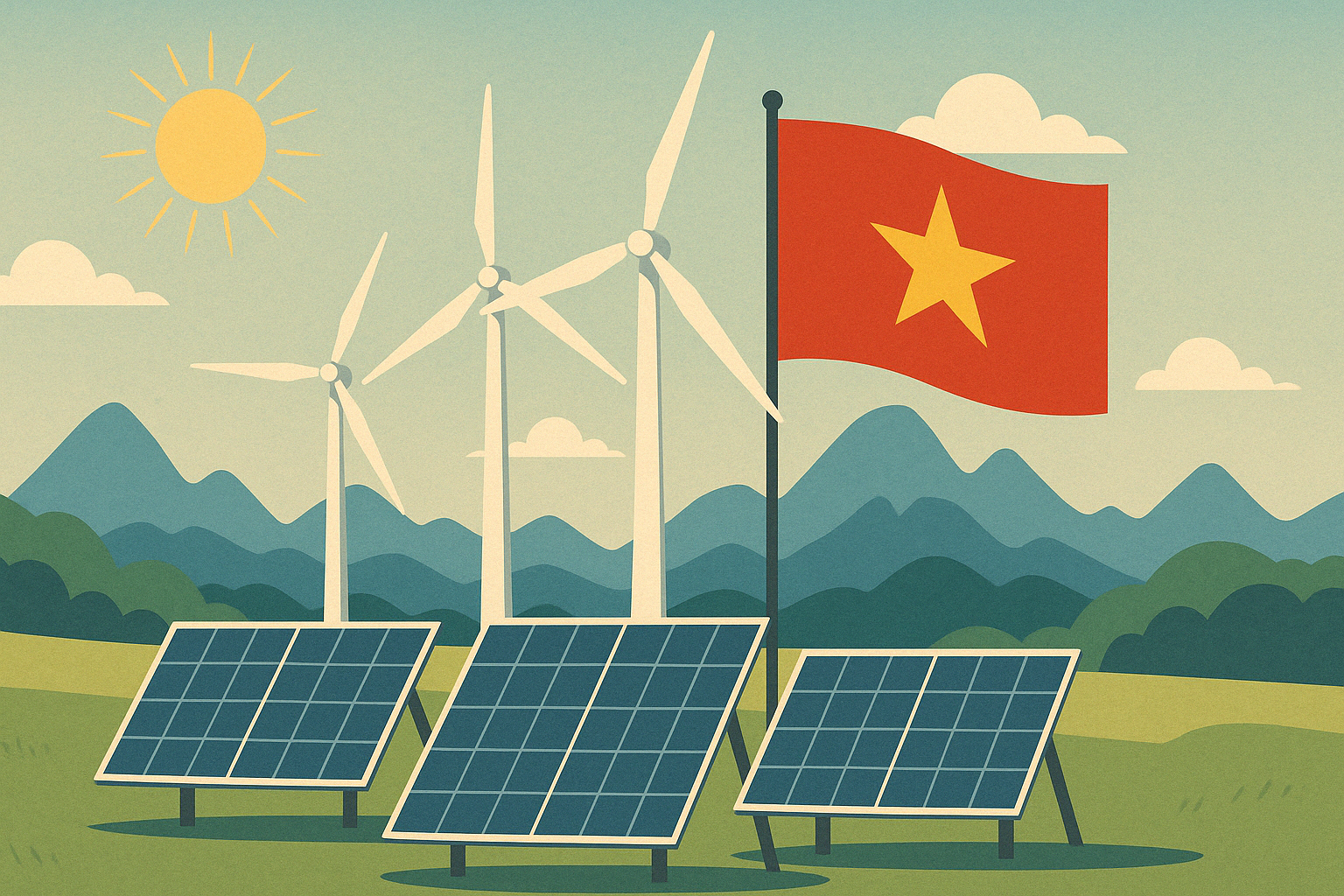Insider Brief
- Vietnam’s revised national energy plan targets a sharp expansion of renewable energy to support projected economic growth of 10% annually from 2026–2030 and 7.5% through 2050.
- Renewable sources (excluding hydropower) are expected to make up 28–36% of the electricity mix by 2030 and up to 75% by 2050, with onshore wind projected at 26,066 MW and solar at 8,736 MW by 2030.
- Offshore wind could reach 139,097 MW and solar 189,342 MW by 2050, as overall installed capacity more than doubles and Vietnam commits to its net-zero emissions goal by mid-century.
Vietnam is betting big on renewable energy to keep pace with its fast-growing economy and rising electricity demand.
Under a revised national energy plan, the government aims to boost power capacity and significantly expand clean energy generation through 2050. According to the Vietnamese government, The plan forecasts that annual economic growth will average 10% from 2026 to 2030, and 7.5% through mid-century. To support this growth, commercial electricity consumption is projected to rise sharply, reaching between 500.4 and 557.8 billion kilowatt-hours (kWh) by 2030, and up to 1,375.1 billion kWh by 2050.
The government aims to generate 28% to 36% of its electricity from renewable sources, excluding hydropower, by 2030 and increase that share to as much as 75% by 2050. These targets support Vietnam’s commitment to achieving net-zero carbon emissions and reflect a growing push to integrate cleaner, more resilient energy systems.

Wind energy features prominently in the strategy. By 2030, onshore wind power is expected to reach 26,066 MW of capacity, compared to Vietnam’s estimated technical potential of 221,000 MW. Offshore wind development will expand more slowly at first, reaching between 6,000 and 17,032 MW by 2030, but could scale dramatically to 113,503 to 139,097 MW by 2050.
Solar power capacity is projected to reach 8,736 megawatts by 2030 and grow to 189,342 megawatts by 2050, marking a major commitment to diversify energy sources. These efforts tap into Vietnam’s estimated 221,000-megawatt technical potential for wind power, according to Vietnam economic news site VnEconomy.
Domestic electricity production and imports are expected to meet this demand, increasing to between 560.4 and 624.6 billion kWh in 2030, and rising further to as much as 1,511.1 billion kWh by 2050, according to government estimates.
Vietnam’s installed power capacity is also set to more than double in the next quarter-century, from about 85,655 megawatts (MW) in 2030 to as much as 228,570 MW by 2050.
A central goal of the plan is to transition away from fossil fuels and increase the role of renewable energy. Excluding hydropower, the government expects renewables to supply between 28% and 36% of the electricity mix by 2030, and as much as 75% by 2050.
The plan reflects Vietnam’s ambition to align with global climate targets while ensuring the country’s power needs are met. As a developing economy with a growing middle class and expanding industrial base, Vietnam faces pressure to deliver reliable energy while reducing emissions.
“This revised strategy charts a course for Vietnam’s energy transition and economic growth in tandem,” the Ministry of Industry and Trade said in the plan.
The proposal also calls for increased investment in power infrastructure and grid improvements to accommodate fluctuating energy from solar and wind sources. While details on financing were not included in the summary, analysts expect both domestic and foreign capital will be needed to meet the targets.
The energy roadmap supports Vietnam’s commitment under international climate agreements, including net-zero emissions by 2050, and reinforces recent efforts to attract renewable energy investment.








